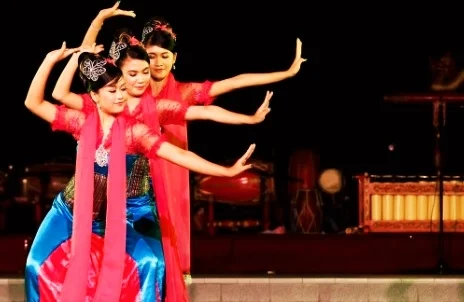"Exploring the Vibrant Jaipong Dance: Rich Cultural Heritage of Sundanese People"
Jaipong Dance is a representative of West Java's regional arts.
Jaipong dance was born in 1961 and was produced by three artists named H. Suanda, Gugum Gumbira and Koswara Widjaya. Since then, the art of Jaipong dance has continued to develop and become the pride of the Indonesian people.
Jaipong dance was initially developed as a ballroom dance in accordance with the youth social movement in West Java at that time. However, now Jaipong dance is not only performed at social events, but also at formal events such as weddings, artistic performances and even competitions or festivals.
Jaipong dance is a combination of various elements of traditional Sundanese and Betawi dance.
This is also one of the reasons why Jaipong dance is always known as authentic Indonesian dance.
The dance elements combined in Jaipong dance include Bedhaya dance, mask dance and Ketuk Tilu dance.
Apart from that, Jaipong dance movements are also influenced by the sounds of gamelan music.
One of the characteristics of Jaipong dance is its dynamic and agile movements combined with powerful gamelan music. Jaipong dance movements can sometimes be called "hard" movements, especially if the dancers display lively movements or sophisticated movements.
However, Jaipong dance movements never depict violence or actions that could endanger the safety of the dancers.
In Jaipong dance, each dancer's movement has its own meaning.
Dancers who understand the content of these movements can perform Jaipong dance better.
In addition to movement, costumes are also an inseparable part of Jaipong dance. Jaipong dancer costumes are usually bright colors such as red, yellow, green and blue.
Although there is controversy over the clothing for Jaipong dance, the art of Jaipong dance is still maintained in traditional clothing to this day.
In fact, traditional clothing in Jaipong dance is also an attraction for tourists who want to see artistic performances from our country.
As time passed, Jaipong dance developed and underwent changes.
Various modern versions of Jaipong dance have also emerged, such as Jaitengan 3K and Jaipong Sunda. However, the Jaipong dance has never been replaced in its original form.
The impression of Jaipong dance is that it is able to bring feelings of joy and enthusiasm to the audience.
Every time the Jaipong dancers appear on stage, it feels as if the energy they create is capable of hypnotizing the audience.
No matter where it comes from or who is watching, Jaipong dance never fails to entertain and impress people.
The art of Jaipong dance now has fans and dancers from all over Indonesia, even all over the world.
There are many Jaipong dance groups or companies spread across various regions, from West Java to East Java.
Some time ago, Indonesian cultural workers and dancers took Jaipong dance abroad to promote Indonesian fine arts abroad.
Jaipong dance is an Indonesian wealth that we must protect and preserve. The art of Jaipong dance not only entertains and creates a happy atmosphere, but can also be used as a dance to introduce Indonesia to the outside world.
Through the art of Jaipong dance we can also learn about the richness of Indonesian culture and appreciate the beauty of Indonesian dance.






Comments